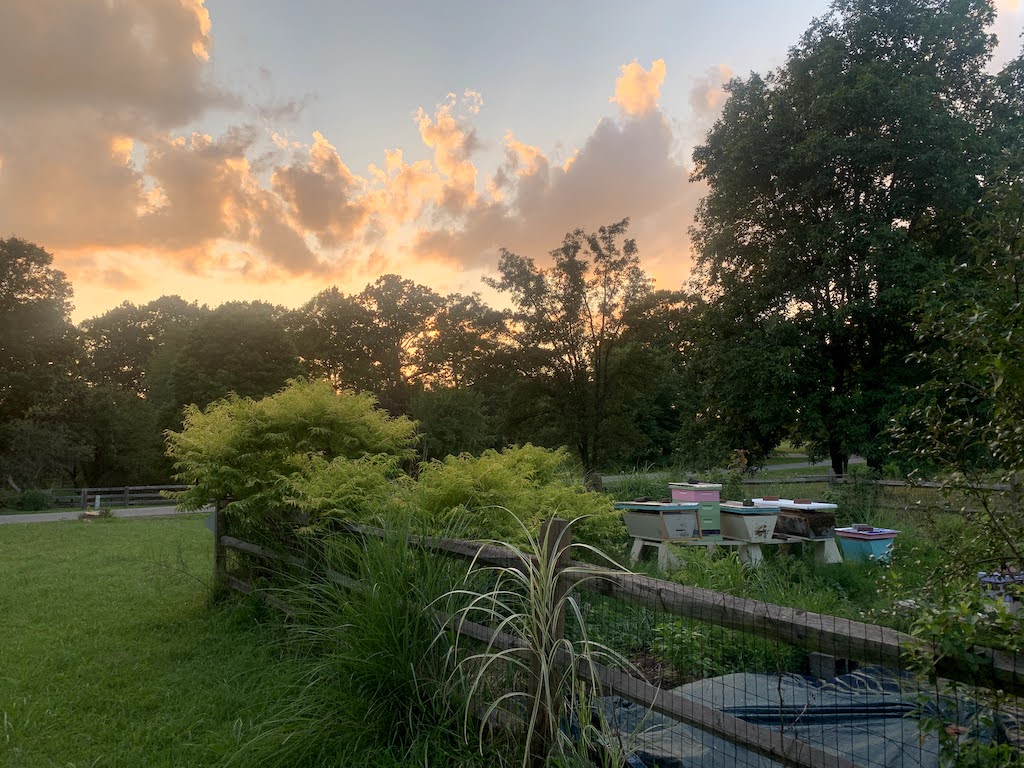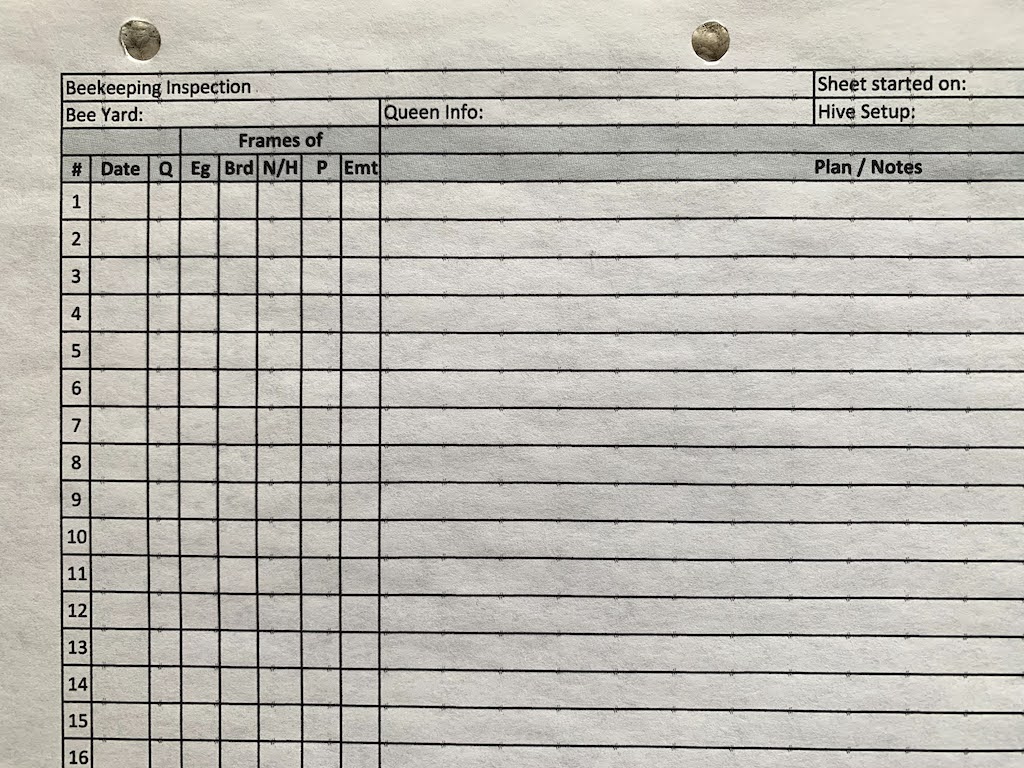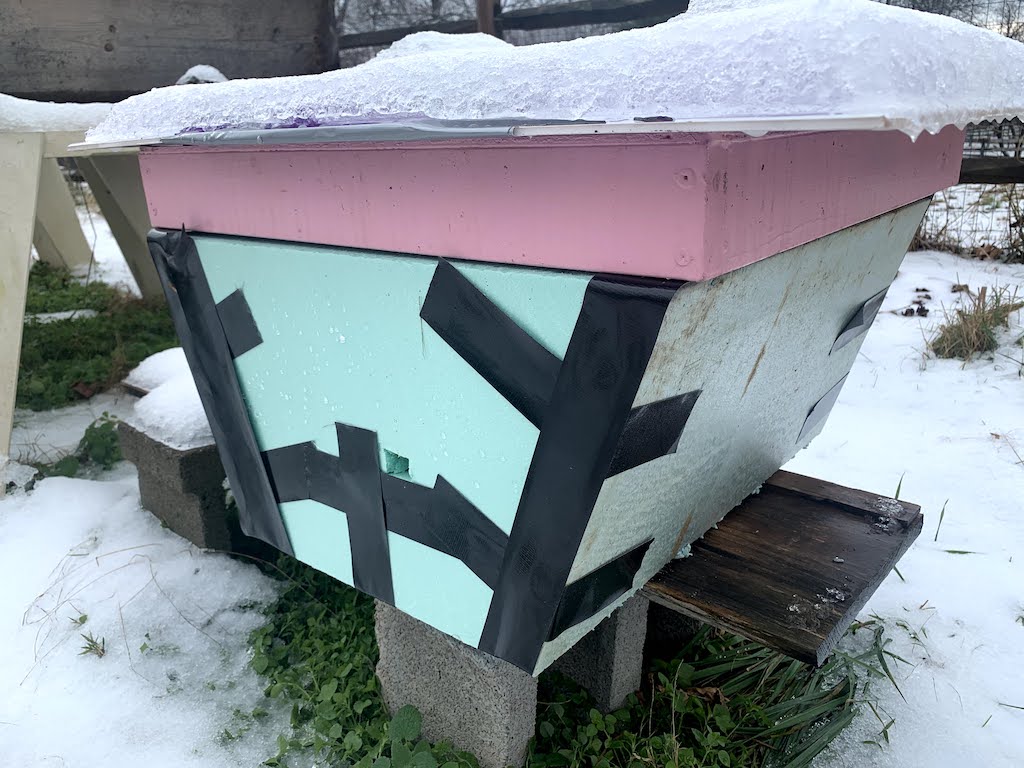It has been forever and a day since I posted something here, so I thought I would share a review my hive performance this year. They are tucked in for winter right now, some hives stronger than others. In this post I will focus on my top bar hives, perhaps prompting me to do another post about my Langstroth hives in the coming weeks.

It was an interesting year in the bee yard, starting with a very early mid-March swarm that I caught and culminating in a surprise August swarm that I missed. My top bar hives did not fully fair well this year, much to my dismay. I thought they were doing well but after swarming a couple of them failed to requeen and it was downhill from there.
As implied in our title, I also changed my record keeping practices this year. In the past I simply had a single notebook and wrote some observations down hive by hive each inspection. This provided a useful history though made it rather difficult to see the story of a single hive. Everything was all mixed together and I had to look through the entire year’s notes to find out what happened to a single hive.
So this year I created a hive sheet to track a single hive. I have a three-ring folder with a page for each hive, and make notes on the appropriate page after inspecting a hive. Here is an image.

With that in mind, here is what happened in my top bar hives (TBH) this year (2020).
Saturn
Perhaps my favorite, this hive has always had a gentle queen and the bees have always done well. On April 8, when checking for mites, I also found the beginnings of queen cells and lots of happy bees. So I found the queen and made up a TBH nuc with a few of the bars, thinking the hive would requeen without swarming and maintain a healthy population. On May 17 I found and marked the new queen (yay me!) so all was going well. Then a week later on May 23 there were fewer bees… they must have swarmed. No idea when, or how. I decided to leave them alone to make yet another queen and stock up on honey before the summer months. That was probably a mistake.

Roughly six weeks later, on July 3, I found no queen and a small lethargic population. Lucky me, I had a Langstroth nuc. I attempted to combine the two hives by putting the nuc bees into the hive and moving the nuc frames into another Langstroth hive. Again, probably a mistake, they needed the young brood to help recover and build the colony, and I took them away. A couple weeks later they were still weak and I tried to give them some nectar, which simply encouraged the other hives to rob them out completely. Sigh.
One week later, when I went in to clean this up, the frames were covered in wax moths and small hive beetle larva. Not only a complete loss but the frames were now ruined as well. So Saturn is gone and we can only hope she can return next year. I’m thankful to have the nuc from her, but more on that later.
Titan2
The original Titan hive didn’t make it through the winter of 2018, and I built a new hive in 2019 which I now call Titan2. After a good winter she was doing well in the spring. I pretty sure she swarmed in May, and a few weeks later on May 17 I saw the new queen. I checked for mites in May and August and found 3 and 2 mites per 300 bees, so less than 1%. As a result I never treated the hive this year, though I did feed about 20 pounds of sugar via syrup in the fall. So far this hive is fine and I am hopeful she will survive into spring.
Venus
This was my first hive. I saw the vendor at a craft fair and it prompted my beekeeping journey. I bought the hive in November 2015 and started from a package in 2015. My daughter and I checked a week later and were amazed to see the comb neatly formed into the blank space of the have. A wonder of nature.
Venus had survived ever since. Some years I thought she was weak and she always seemed to pull through. The bars are a bit smaller than I now prefer at 14 inches (the other TBH have 17 inch bars, the same as Langstroth bars) and the roof leaks a little (last year I covered her with a plastic tarp). So I typically just leave this hive to its own devices for much of the year.
In May there were lots of queen cells and no eggs, and the mites clocked in at 17 per 300 bees (6%). So I treated with Formic Pro, removed it two weeks later. On April 1 I found and marked the queen, there were tons of bees, and I found zero (0) mites. All good. The below picture was taken in August. Elevating the roof as you see here seems to help the bees keep the hive cooler, and provides a shaded area when bearding.

On April 19 a neighbor reporting seeing a swarm, which was gone by the time I got there. As it was later in the year, I hadn’t even considered that Venus might swarm. There were suddenly a lot fewer bees at the entrance, so she was the likely culprit. A real shame, though I figured she had plenty of stores and left her alone. I didn’t take a look until October 10, which was probably too long, as I only found 5 weak frames of bees. There was a queen present, just not much of a hive. I’m not sure what happened. With the smaller frame size, it would have been difficult to combine with another hive. With the cold weather coming I figured she wouldn’t make it and it would be too cold for wax moths or other pests to move it.
I have not checked, but I’m pretty sure this hive is dead. I haven’t seen any activity and we’ve had some very cold nights. The comb in this hive is old, and the frame size is different from all other hives, not to mention the roof leaks. So I will say goodbye to my muse, they say you never forget your first hive. She had a good run.
TBH Nuc
As I mentioned, this hive started from Saturn in a one-foot nuc box, with the queen, two frames of bees, and some honey and pollen. Eventually she migrated to my 2+ foot hive that holds around 15 frames. Her mites were fine on August 1, just 1 per 300 bees, but I had an extra Formic Pro pad so I treated it anyways. Overall I fed her about 10 quarts of sugar syrup, and thought she had a chance for the winter. I even wrapped her in foam insulation to conserve her warmth in the winter.

She was quiet for weeks, and I feared the hive was dead. Last weekend, with 60 F weather, the bees were finally out and about. I peeked inside and even saw some capped stores, so I’m thinking the population might be a bit small. So hopefully the girls stay warm until spring and we will see them again.
Conclusion
So that’s it. Two TBH hives left from the three I started the year with. I’m pretty sure Titan2 will be fine, and the TBH nuc has a chance. I also caught a swarm into another TBH nuc in May, but three weeks later there was no queen and the bees were not doing well, so I disassembled this hive and let the bees migrate elsewhere.
I had better luck with my Langstroth hives, which I hope to share in a future post.
Put Your Records On
Our title today comes from the song by Corinne Bailey Rae. According to songfacts.com, “In this peaceful song, Corinne Bailey Rae casts worry aside, because life is better spent with your hair down, listening to records.” The Salt Lake City-based singer Ritt Momney did a cover of the song in 2020 as a response to the COVID-19 pandemic, calling it “the most positive and helpful song” he could think of (this also from the songfacts.com reference).
I have always found the song rather relaxing as well, about simpler times doing what makes you smile. When I thought about working the bees on a summer day, watching their graceful flights and writing down my new hive notes, this song just came to mind.
May you prosper and find honey.
Thanks for your update! I hope you find time to write more, you always have such interesting reports.
LikeLiked by 1 person
Thanks, Ron, appreciate the kind words.
LikeLike
enjoyed all the news of the bees……..lots going on there !!!!!!!!!!!!
mom
LikeLiked by 1 person